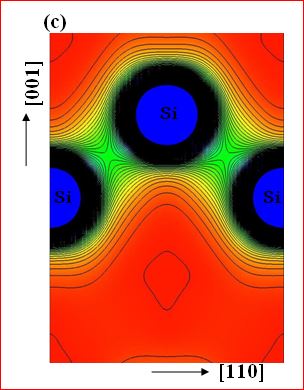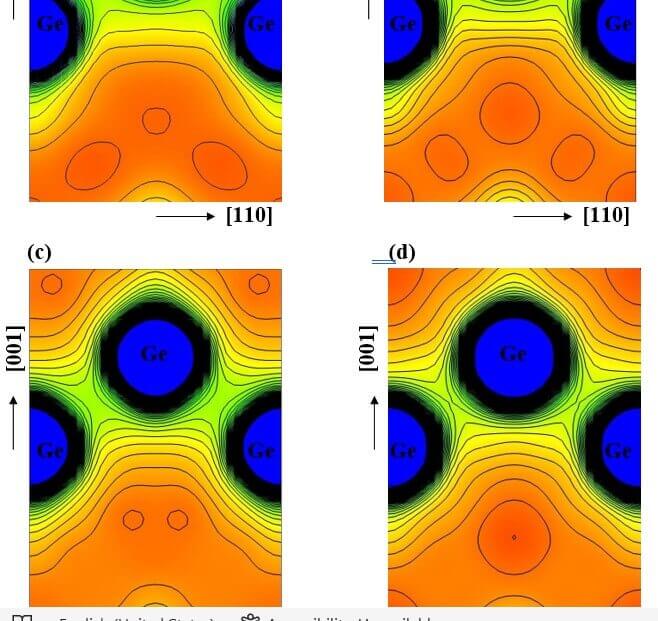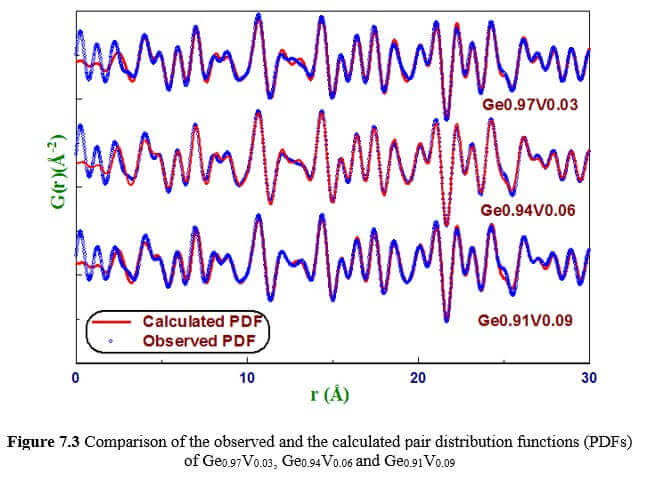Diluted magnetic semiconductor (DMS) materials have been extensively investigated due to their enormous applications in the field of electronics such as spintronics, photonics etc. Silicon (Si) and germanium (Ge) based DMS materials are researched because of their potential applications in spintronics devices such as (i) magneto resistive random access memory (MRAM) (ii) spin transistor (iii) giant magneto resistive (GMR) read heads for hard disks (iv) magnetic sensors etc.
The silicon (Si) and germanium (Ge) based diluted magnetic semiconductor (DMS) materials considered here are;
- Ge1-xMnx (x = 0.04, 0.06, 0.10)
- Ge1-xVx (x = 0.03, 0.06, 0.09)
- Ge1-xCox (x = 0.03, 0.06, 0.09)
- Si1-xMnx (x = 0.02)
- Si1-xNix (x = 0.03, 0.06, 0.09, 0.12)
- The doping of Mn in the host Ge matrix has been confirmed from the changes in the lattice parameters.
- The contribution of the intermetallic domains to disorder of the lattice has been confirmed by the observed powder X – ray intensity peaks.
- The formation of Mn – poor Ge8Mn11 is preferred when x = 0.04 while formation of both Mn – poor Ge8Mn11 and Mn – rich Ge3Mn5 is preferred for higher concentrations of the dopant.
- A compression of lattice has been observed when x = 0.04 and expansion of lattice has been observed when x = 0.06. This is due to the hybridization of d orbital of Mn with p orbital of Ge that causes local magnetic moment of Mn atom in the Ge matrix. This magnetic moment increases the mixing of the orbitals and thus affects the structural parameters of Ge1-xMnx.
- The formation of the intermetallic domains, Ge3Mn5 and Ge8Mn11 increases with the dopant concentration and hence, the disorder in the system increases. Therefore, from our observation, x = 0.06 is suggested as the maximum possible dilution for the preparation of DMS Ge1-xMnx.
Research works and scholars































